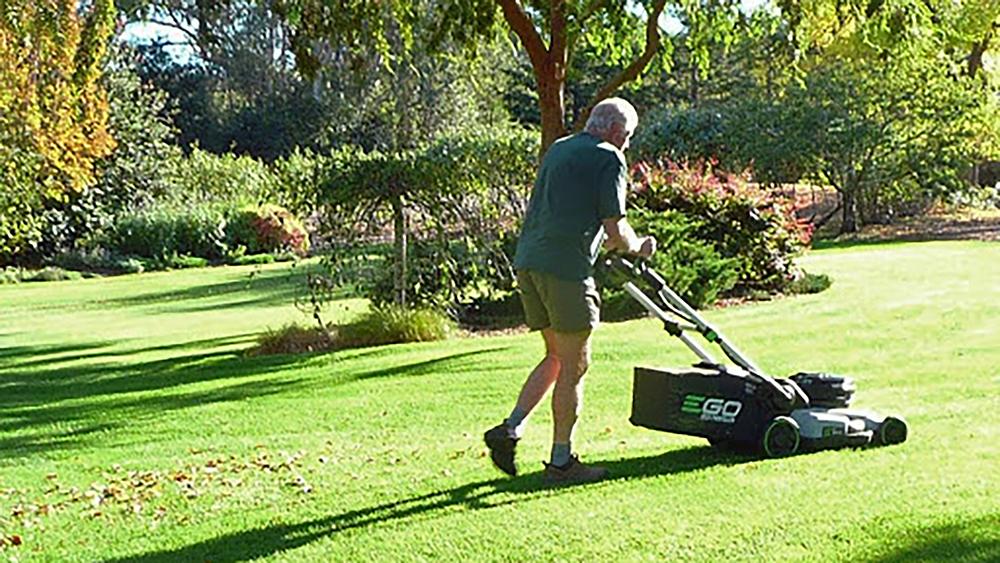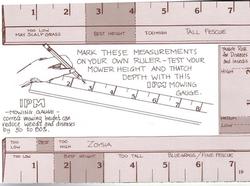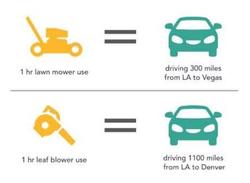Lawn Care Basics

> Mowing established lawns
> Watering
> Fertilizing
> Grasscycling
> Dethatching
> Aerating
> Maintenance equipment
> Consider letting your lawn go dormant
You can maintain turf using methods that are gentle on your pocketbook and easier on the environment by choosing the right type of grass for your situation. Then take steps to keep it healthy, avoid excess and unnecessary chemicals, and use manual or battery-operated tools.
No two lawns are exactly alike. Lawns may differ by turf species, soil type, climate, location, how they are used, and how they are maintained. The key elements of a good lawn maintenance program include:
• Mowing
• Irrigating
• Fertilizing
• Dethatching
• Aerating
Keeping your lawn healthy is the best way to have it quickly recover from wear, pest damage, or mechanical injury.
Mowing established lawns

• The equipment you use
• How you mow
• How much, when, and how often you mow
• Lawns requiring special attention
Whenever possible, keep the lawn cuttings right on the lawn – grasscycling releases nutrients back into the soil, reducing the need for added fertilizer.
Here’s some more information on "Mowing Your Lawn and 'Grasscycling'."
Watering
Paying attention to your watering system will help you maintain an attractive, healthy lawn and protect the environment at the same time. Poor watering practices are the main reason for dead and dying areas in lawns and a common source of urban runoff. Runoff can move fertilizer, pesticides, or other hazardous chemicals down storm drains and into our waterways.
Water only when your lawn needs it:
• Water requirements vary according to turf species, location, and month of the year.
• Most lawns need water when the top 2 inches of soil have dried out. Use an object such as a screwdriver to probe your soil and measure the depth of the moisture.
• Deeper, less frequent watering is best for most lawns. Water only two to three times a week.
• Avoid runoff. Make sure your sprinkler system does not produce runoff, especially on slopes. If you see runoff, use shorter watering times, and repeat the cycle to allow time for the water to move into the soil.
• Adjust your watering schedule seasonally and shut off your irrigation system during rainy weather.
Learn more about:
• How you water
• When you water
• Irrigation scheduling
Fertilizing established lawns
Lawns that are discolored, slow-growing, or have invading weeds or other pest problems may not be properly fertilized. Fertilizer is important for healthy, vigorous plant growth and development. Because many of the required nutrients for turfgrass are found naturally in the soil, fertilization practices focus on the supply of three primary nutrients — nitrogen, phosphorus, and potassium. Nitrogen is the only nutrient that turfgrass needs on a regular basis. Lawns may occasionally be deficient in iron, and fertilizers containing iron may be supplemented. As nitrogen is applied, both root and shoot growth increases. If too much nitrogen is applied too frequently, shoots will continue to grow yet root growth will slow, leaving the turf vulnerable to problems.
Give your lawn the nutrition it needs:
• Make sure it is the right time to fertilize your turf.
• Purchase fertilizer and check the label to see how much nitrogen it has in it.
• Determine how much actual material you need to apply per application and how often it should be applied.
• Set your spreader to the appropriate setting.
• Pour the material into your spreader over a driveway or other cement area where spilled material can be swept up (pouring over a lawn where spilling may occur can lead to burn); do not let excess fertilizer be washed into storm drains.
• A few days before you fertilize, deeply irrigate your lawn so that the soil is moist; the grass blades should be dry by the time you start your application.
• Apply fertilizer.
Learn more about Lawn Fertilizing.

Benefits of grasscycling
Grasscycling supplies about 20% of the fertilizer requirements of most grasses. Leaving your clippings on the grass after mowing is beneficial as it returns nutrients back to the soil. However, it is only beneficial if you follow proper watering, mowing, and fertilizing guidelines. Avoid overfertilizing as it can cause vigorous shoot and stem growth, contributing considerably to thatch buildup.
Dethatching
Thatch is the layer of living and dead stems, roots, stolons, and rhizomes between the green blades of grass and the soil surface. A thin layer of thatch (less than 1/2 inch thick) can be beneficial to the lawn because it helps to limit weed germination, reduce water evaporation, and protect from frost damage. Thick thatch layers can prevent water, air, and nutrients from penetrating the soil, causing reduced root growth and increased potential for drought stress. Thatch also favors fungal growth and can harbor insect pests.
You can prevent thatch buildup by:
• Following proper fertilization practices; avoiding excessive amounts of nitrogen.
• Avoiding frequent and shallow irrigation on established lawns.
• Mowing properly; remove clippings if too much of the grass is removed at one time.
If you’ve already got thatch, here’s information on dethatching methods and when to dethatch.
Aerating
Heavy clay soils or soils with heavy foot or equipment traffic often become compacted over time. Soil particles are pressed close together, restricting the movement of oxygen, nutrients, and water to the lawn. As a result, the lawn grows slowly and poorly, and may become susceptible to drought, disease, and insect damage.
Aerating the soil removes small cores of soil from the lawn, allowing air, water, and nutrients to penetrate the soil. Here’s information on aerating methods and when to aerate.
Maintenance Equipment

Consider letting your lawn go dormant
Many of today’s regionally adapted turfgrasses can handle a period of drought or heat. Turfgrass has the ability to go dormant during adverse conditions. Dormancy is simply a state of reduced water usage where the turfgrass plant focuses resources on the roots.
Summer dormancy is a normal response to the stress of heat and drought. Most turfgrass plants can stay in a dormant state for at least 3 to 4 weeks without the grass dying. The length of dormancy depends on the genetics of the species and the overall health of the plant.
Make sure the turfgrass is as healthy as possible before dormancy begins. Avoid stressing it once conditions become unfavorable. Dormant turfgrass will turn brown and is often considered unsightly, but it will recover when conditions improve.
